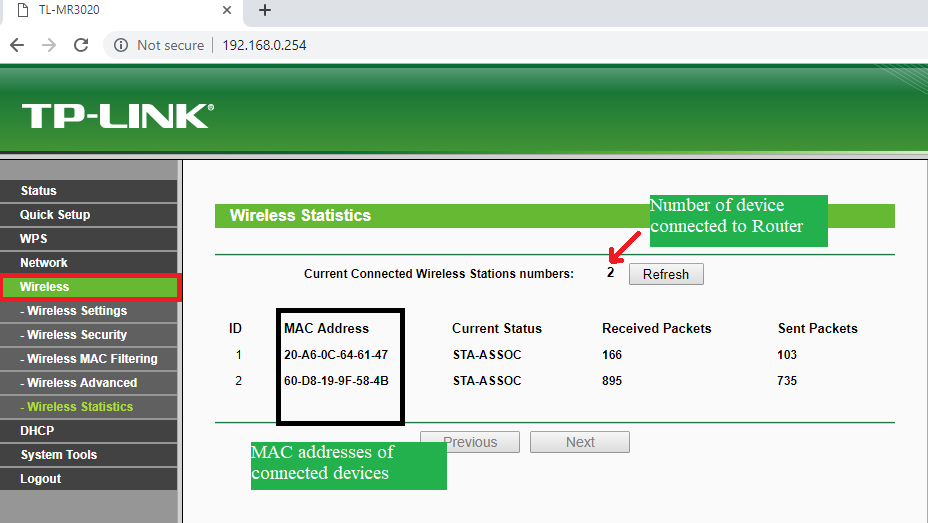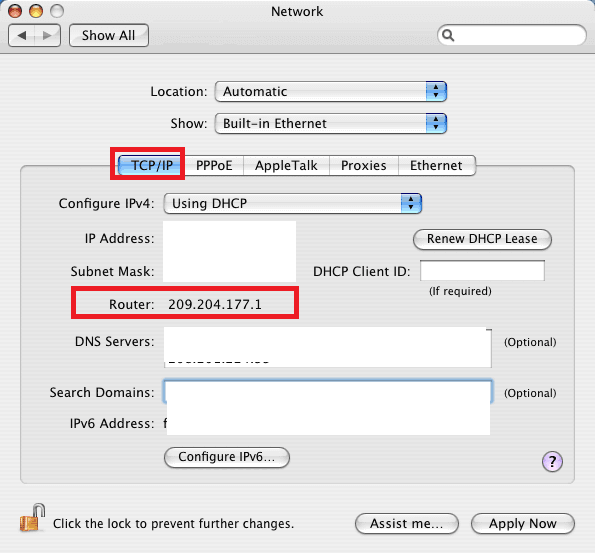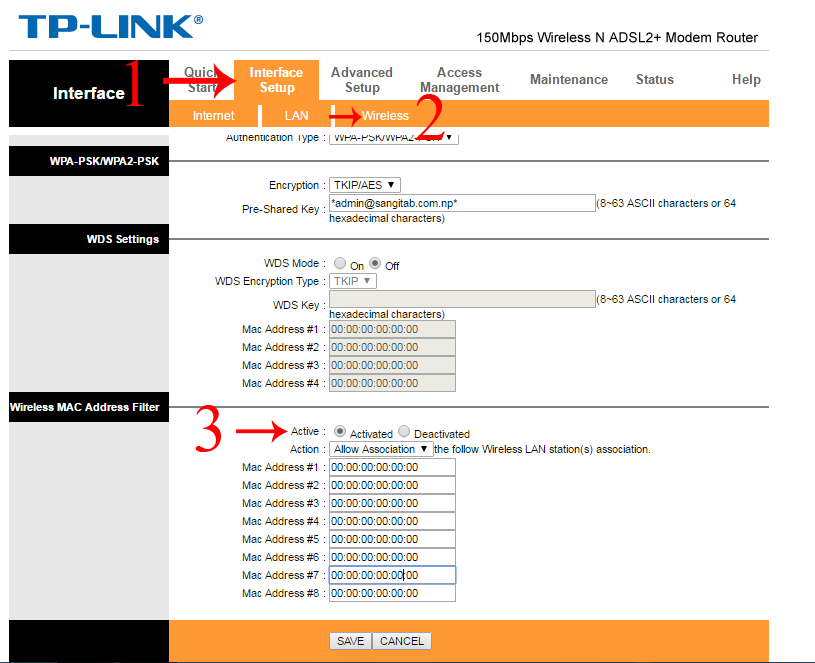In most cases, you should then see Using DHCP in the Configure IPv4 pop-up menu, along with your Mac’s IP address, subnet mask, router, DNS server, and search-domain information. Top comment 'Fast easy set up.gets the job done. I was replacing an Apple Time Capsule, with an extensive array of smart home and entertainment devices connected, as well as several computers, and iOS devices.All this makes Linksys MR8300 Max-Stream AC2200 Tri-Band Mesh Wi-Fi Router a good choice for a mid-level router that will see high bandwidth usage - especially if you have a large.
When you buy through our links, we may earn money from our affiliate partners. Learn more.
© Provided by Business Insider Tyler Hayes/Business Insider- Linksys's Velop line of mesh routers is a home Wi-Fi solution that is easy to set up and maintain and which has performed well over weeks of testing.
- The system's app-based configuration and remote access makes changing settings and looking up information convenient.
- The height of the vertical router devices can potentially be more limiting for placing around the house, but the matte white plastic finish and overall design is pleasant.
While the system is costly and premium when rated at AC2200 (midrange signal strength and range), it's still largely in-line with similar solutions from other companies.
Picking a suitable mesh networking router system is key for homes that need extended Wi-Fi. Instead of picking the biggest, beefiest possible router and directing its signal to every part of the house, mesh networking divides up the workload to multiple units or nodes around the house that, most of the time, reach further than one single wireless router could. There are plenty of choices for mesh systems, but one of the emerging favorites has been the Linksys Velop AC2200.
To test out the mesh networking system, I installed it in a two-story, 2,000 square foot home in Southern California. I have used other mesh networks from Eero and Google in the past, and I wanted to see how Linksys's version handled heavy use across 40-plus devices.


Linksys is a long-time player in the networking world, first owned by Cisco and now owned by Belkin. The Velop AC2200 router comes in either a one, two, or three pack to start off, but the whole point of a mesh system is that it supports multiple nodes, and so you can add additional ones if an area of your home is still not getting decent coverage.
The company offers several different Velop systems. I tested the three-pack of the AC2200. Each of the different variants provide different levels of feature sets. For example, the latest, and super-expensive, MX5 Velop AX includes support for Wi-Fi 6. The general mesh system that the Velop name refers to should be quite similar in customer experience such as the app other touch points.
Linksys Velop specifications
© Amazon Amazon- Wi-Fi Technology: Tri-Band AC2200 (867 + 867 + 400 Mbps)‡ with MU-MIMO and 256 QAM
- Wi-Fi Bands: Simultaneous Tri-Band (2.4Ghz + 5GHz + 5GHz)
- Number of Ethernet Ports: 2x WAN/LAN auto-sensing Gigabit Ethernet ports
- Antennas: 6x internal antennas and high powered amplifiers
- Processor: 716 MHz Quad Core
- Dimensions (LxWxH): 3.1' x 3.1' x 7.3' per Node
- Security Features: WPA2 personal
- Additional Information: Bluetooth 4.0/LE for app based set-up
- Beamforming: for 2.4 GHz and 5GHz bands
Setup and features
Much like solutions from other companies, Linksys utilizes a mobile app to connect to its wireless mesh system to begin the setup process and configure all the settings. The Velop system is feature-rich and looks to the future in terms of its app-based utility.
Setting up the Velop AC2200 system is very simple and straightforward. I've set up hundreds of wireless networks over the last 15 years in a technical role, but I continually try to keep people in mind who may be doing this for the first time. Much like Eero should get credit for leading the charge in simplifying the setup process of wireless networks, I think Linksys does a great job at wrangling all the potential headaches into a few easy-to-understand steps.

Half the time it takes to set up the three-node mesh network is spent walking to the different locations and plugging the nodes into power. The app detects each node with my phone about one foot away from it, and the first one takes a few minutes to get itself ready for the name and password I want to use.
For some reason, setting up the second two nodes each take a little bit longer to configure than the first one, but it should be expected as the app says it will take about six minutes to gather the settings from the other devices. I actually set up two nodes initially and then came back later to finish adding the third unit. It worked nearly the same to set up one later as it did the first time around.
© Tyler Hayes/Business Insider Tyler Hayes/Business InsiderAll the standard features you'd expect from a premium mesh system are present, including remote access, basic parental controls, guest network, device prioritization, and speed testing.
The basic parental controls allow you to pause device access (or schedule pauses) and block specific websites. These features work as advertised.
Linksys does try to upsell its advanced parental controls for $50 per year with Linksys Shield. For a little over $4 a month, you can block potentially harmful sites based on categories like social networking or gaming.
The other upsell for the mesh system comes in the form of Linksys Aware. This advanced feature will detect motion in your home and alert you either all the time, or just at the times you want to know about. Aware costs $25 each year to use your router as a motion-detector. For the curious, it works by detecting changes with the invisible radio waves, similar to the response time in sonar. I did not try either of these premium add-on services, so I can't comment on their effectiveness.
One of the disappointing features missing is the ability to see how much data a certain device is consuming or has consumed. If you are experiencing a sudden or random decline in speed, it can be helpful to see how much data each device connected is pulling in. Google's Wifi system provides this functionality, and I have found it extremely valuable the half dozen times I've needed to check on something.
Another slightly disappointing task was sharing the guest network password was a bit buried. If you open the app and scroll to the bottom, you'll see a button that says, 'Share Wi-Fi.' This opens a screen to share the password to your main network over email, text, or copy it to the phone's clipboard. It would be nice to see a share guest network button underneath as that's the one that will likely get shared more times. The functionality is still there under the guest network setting; it just requires a few more taps each time.
After some delay, Linksys has begun rolling out its Apple HomeKit support. We're excited by this feature because of the further integration it provides for iOS users and potentially simplifies ease of use even more. It's a great addition for those who are in the Apple ecosystem, but doesn't take away anything for those who don't need it.
Performance
I switched over from a first-generation Google Wifi mesh network with four units to the Velop AC2200 with three nodes for testing. After installing a fourth Google Wifi unit in my bedroom, I hadn't had any issues with my current setup.
The Velop system claims to provide coverage of 2,000 square feet for a single node and up to 6,000 square feet of home coverage when all three are in use.
My front yard and backyard, as well as the garage all saw full bars of wireless signal most of the time. Despite the signal strength, I once experienced degraded wireless streaming performance watching Hulu on Apple TV in the same room as a Velop node. After checking the internet speed inside the Linksys app and seeing full speed from my internet service provider, it's hard to tell where the temporary problem resided.
This issue allowed me the opportunity to try the app's prioritization feature and set the Apple TV device to be prioritized over others in the house for a limited amount of time. If the app would show how much data each device in the home is consuming, it would also make seeing rogue culprits contributing to degraded streaming video quality easier. The problem resolved itself after a few minutes as being listed as prioritized.
I installed the new units in the same locations as the other ones, minus that fourth unit in the bedroom. In my initial assessment of the performance, it seemed to load content across apps and sites as fast as expected. I have had the intermittent slow down and degraded performance, but after checking it has not been something that can be pinned on the mesh system specifically. And, over the years I have not encountered a Wi-Fi network which didn't encounter the occasional hiccup.
Even in the garage or other places farthest removed from a node, ping time latency and local network speeds remains acceptable.
For any hiccups customers do experience, there's a button in the Linksys app that runs through the basics for people experiencing slow internet — speed check, household usage, signal strength, and restarting the system.
Design
© Tyler Hayes/Business Insider Tyler Hayes/Business InsiderLinksys chose to go tall instead of wide with its mesh-router nodes. The matte white mini towers are solid plastic on one side, while the other side is peppered with holes, presumably for ventilation.
Overall the tiny statues dedicated to wireless connectivity should be manageable in a variety of locations in homes, despite their roughly eight-inch height. While Eero and Nest went wider and flatter with the access points, the Velop units are more slender.
How To Get To My Router Settings
I liked the matte white finish, though I could have done without the shiny Linksys logo. The three-piece mesh networking system blends in fine with my home's decor, but may or may not be out of place at your home.
Some of the different Velop models are slightly shorter, and one model coming in a black colorway which could be a consideration, but each are proudly vertical in their design.
The bottom line
The Linksys Velop AC2200 is an effective, solid mesh networking option. It provides ease-of-use for first-time network 'admins' and plenty of features for those looking for advantage configurations. This is a competitive solution for robust wireless networking.
Alternatives
While Linksys' Velop AC2200 is a great solution, there are of course others that match up similarly.
Eero's latest mesh system provides a largely parallel experience to Velop. Although Eero is also priced in a premium fashion, Amazon does regularly put it on discount which might undercut this Linksys option.

Google's Nest Wifi mesh system is probably one of the most interesting in this space because of two unique features. First, the wireless units provide Google Assistant voice functionality so you can talk to them the same way you would a Google Home Mini or other voice assistant. A minor, but important, feature is that Google's wireless system also shows which devices are consuming data and how much. You can view data use in real-time or on a weekly or monthly basis.
Featured Topics
Recommended settings for Wi-Fi routers and access points
For the best security, performance, and reliability, we recommend these settings for Wi-Fi routers, base stations, or access points used with Apple products.
Router Settings For Macbook
Learn moreHow to reset your AirPort base station
Learn how to reset your AirPort Time Capsule, AirPort Extreme, or AirPort Express Base Station.
Learn moreHave a question? Ask everyone.
The members of our Apple Support Community can help answer your question. Or, if someone’s already asked, you can search for the best answer.
Ask nowTell us how we can help
Answer a few questions and we'll help you find a solution.
Get support